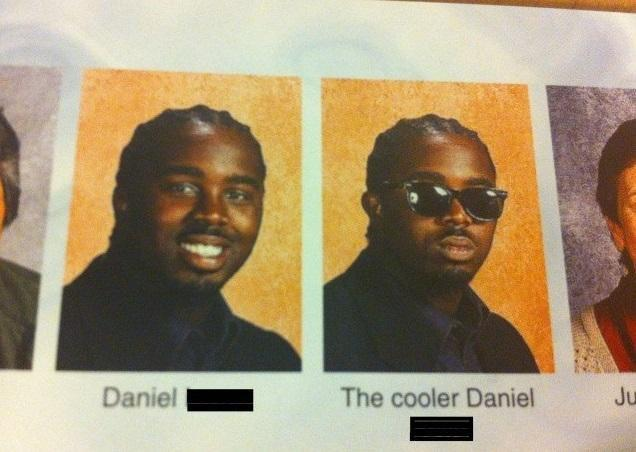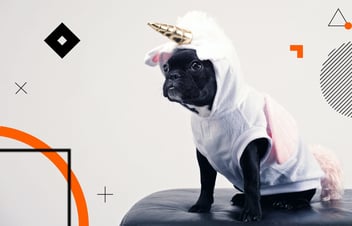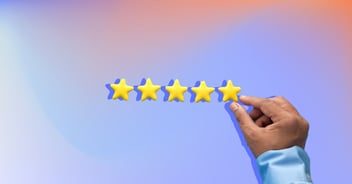
What makes B2B marketing creative? Is it doing something that your competitors aren’t? Is it sticking to brand guidelines? (shudders) Irrespective of this, B2B marketing has been getting a lot of stick in regards to creativity (or the lack of it).
A recent discussion has arisen on how long-term gain such as brand marketing is more beneficial than short-term goals like lead generation. Similarly, another debate that is gaining traction amongst marketers is should B2B be adopting B2C processes to push for broader creativity, over the traditional B2B marketing creative?
There has been an unfortunate stigma attached to B2B for many years. B2C has always been viewed as the cooler, older sibling.

Accurate representation of B2B and B2C marketing respectively.
It’s hard to argue against this point. When sharing industry creative work amongst the wider team here at Punch!, the same comment tends to come up again and again…
‘I really struggled to find a creative B2B example’
The B2B creativity problem is, unfortunately, systemic. Whilst B2C principles are gaining momentum within agencies[1][2], B2B companies themselves are unfortunately less inclined to adopt the same thinking.
But is this criticism justified? Is B2B hindered by forces B2C aren’t bound by? And if so, how can B2B companies revamp how they look at creativity?
Brand Guidelines… Handy or Hinderance?
Ahh, brand guidelines, every agency creative’s religious text & instruction manual rolled into one. Now don’t get me wrong, I know their purpose, and completely agree that they’re a useful tool to have. It’s more what they represent than their intention.
‘We Just can’t get it past our brand team’
My biggest gripe with brand guidelines is that they’re often used as a get-out-of-jail-free card for shutting down creativity. But let’s talk about what a brand actually is. Is a brand defined by its colours and fonts? Is a brand defined by its mission and vision? Or is a brand simply the product or service it puts out?
However you define your brand (I personally sway more towards the middle of the three ‘definitions’), guidelines should be used to ensure that the logo is consistent and that the right shade of blue is used. They should not hamper the creativity of your marketing output.
Linked to Leads
I mentioned the debate of brand against leads in the introduction, and this is intrinsically linked to the conversation of this article. If the objective of a marketing programme or campaign is to generate leads, first of all, the length of the campaign is likely to be much shorter than a brand campaign, meaning that ideas have less room to develop and evolve both thematically and visually over the course of a campaign. Secondly, the channels & tactics used to do this (email, phone, content nurture to name a few) tend to be less visual than those for brand (paid media, OOH, etc.).
Looking to B2C for Answers

Take a B2C example, have you seen a Coca-Cola campaign that looked the same? Yes, the distinctive bottle remains the same, but outside of that, each campaign is uniquely different. What about Nike? Or McDonald’s? There’s a reason it’s the biggest brands that have the most diverse marketing.
Mimi Turner in ‘The Product Delusion[3]’ uses Coca-Cola to convey the problem that B2B marketing faces. She imagines if the brand marketed themselves as B2B brands do, they would focus on ‘how sweet, brown and fizzy it was’ and surmise that ‘95% of thirsty people agree that Coca-Cola solves their thirst problem’.
In reality, this doesn’t work, because the product is near identical to competitors like Pepsi. What they can compete on however is the brand recall in buying situations, and being memorable with strong creativity.
As with B2C, most B2B offerings compete in vastly saturated markets. So it’s worth asking, can you differentiate on product? Is your USP actually unique? And even if it is, is it alone memorable enough for someone to remember your offering when they’re in market for it?
Justifying a More Creative Approach
This type of thinking is intrinsically linked to the 95:5 rule[4], which states that based on a 5 year contract length (for example, this principle can still be applied to any contract length), only 20% of your accounts are in market in any year, and only 5% in any quarter. With this type of thinking in mind, if you’re wanting to engage with your whole target market, then you need to aim to be memorable when the future time comes to buy, and not just there for those in need at present. And how do you be memorable? By having creative that’s unique and interesting.
Conclusion
The meme at the start of the article of Daniel and the cooler Daniel is actually a great representation of B2C and B2B marketing, because they’re the same thing, trying to reach the same people, just with different buying journeys.
In terms of creativity, there are a few B2B companies that come to mind and Salesforce is a good example of B2B creativity done right. Taking a leaf out of a traditionally B2C creative tactic of creating ‘mascots’[5]. Characters such as ‘Astro’ and ‘Einstein’ (Salesforce making the most of the public domain) give a memorable, personal quality to a very impersonal product such as software. Does it work? Well, I remembered them for this blog.
Sage is another interesting company to watch in this space. Not only did they rebrand recently with a more interesting art style, their CMO Cath Keers has spoken in two separate Marketing Week articles about ‘Why Sage is swapping B2B for ‘human to human’ with the launch of its first brand purpose’[6], as well as a shift to long-term brand building to drive sustainable growth.[7]
In the current state of things, these examples are far and few between. So is there hope for more inspiring B2B marketing? We can look over the channel for exactly this. Cannes recently announced the Cannes B2B Lions[8], a set of awards to showcase the best in B2B creativity. This alone should spark an urge for more creative work in B2B, and the knock on effect of this, combined with the thinking above as, both become more routine in agencies and companies alike sees the future of B2B creativity looking brighter than it’s ever been.
[1]https://adage.com/article/stirista/its-time-bring-creative-new-thinking-b2b-marketing/2358786
[2] https://trunkbbi.com/news/creativity-in-b2b-a-myth-or-a-must-have/
[3] https://business.linkedin.com/marketing-solutions/b2b-institute/b2b-research/trends/the-product-delusion
[4] https://business.linkedin.com/content/dam/me/business/en-us/marketing-solutions/resources/pdfs/advertising-effectiveness-and-the-95-5-rule.pdf
[5] https://www.salesforce.com/blog/meet-trailhead-characters-blog/
[6] https://www.marketingweek.com/sage-first-brand-purpose/
[7] https://www.marketingweek.com/sage-cmo-b2b-power-brand/
[8] https://www.canneslions.com/enter/awards/engagement/creative-b2b-lions#/
Image sources:
http://www.adeevee.com/2014/09/coca-cola-coke-meals-print/
https://www.afaqs.com/news/advertising/coca-cola-introduces-new-global-platform-for-brands-trademark-and-new-perspective-for-its-logo
https://bbj.hu/budapest/festivals/in-hungary/coca-cola-defends-lgbt-tolerant-poster-campaign




